Social Media & Content Marketing Strategy Alignment
The Definitive Guide
Imagine if you got stuck in a vacuum where there is no air and no light! Do you think you can survive?
Obviously, no, likewise, no marketing channel can thrive in isolation as all of them are interlinked and considering how crucial marketing any brand has become nowadays, creating a comprehensive promotional social media content marketing strategy holds prime importance for entrepreneurs.
The real challenge is identifying what strategies to align for making a cookie-cutter marketing recipe that guarantees a streamlined promotion of your products and services for generating 10k+ customers.
Here we are going to crack the formula of integrating two of the most effective marketing strategies.

On the one hand, we have content marketing, which is the best way to keep your audience engaged and educated.
On the other hand, social media helps in the seamless distribution of your content, and 67% of marketers believe that these channels contribute to their organization’s revenue.
Content marketing and social media are like muffins and cupcakes. They might look entirely different from outside, but in reality, they are quite similar, work in tandem and complement each other exceptionally well.
But determining how to align these two content promotion strategies is a daunting task, even before finding that some basic questions need to be answered.
So, without further ado, let’s hit the bullseye!
Chapter 1:
What’s Content Marketing In Real Sense?

Content marketing has become a buzzword in the digital landscape, but it’s nothing beyond the art of storytelling.
One of the simplest and the best definitions of content marketing is by an award-winning marketer and the director of content marketing at Fuze Amanda Maksymiw:
“The process of developing and sharing relevant, valuable, and engaging content to target [an] audience with the goal of acquiring new customers or increasing business from existing customers.”
From this definition, it’s clear that content marketing isn’t limited to creating content. It’s about the entire process which begins from the creation and comprises distribution and promotion of different formats of content such as eBooks, blogs, infographics, brochures, videos, etc. with a motive of:
- Increasing conversions
- Interacting effectively with your target audience
- Building brand awareness
- Generating thousands of quality leads
Chapter 2:
Are You Clear About The Definition of Social Media Marketing?

Social media channels like Facebook, Pinterest, Instagram, Twitter, and Snapchat have become powerful tools to connect with your customers and influence potential leads by posting and sharing relevant content for:
- Driving more traffic to your website
- Increasing sales
- Building a brand image
However, social media marketing isn’t limited to just posting content on your social pages. You need to ensure that you are sharing tailored content to suit the context of a particular social channel for driving maximum engagement with the help of a SMM panel.
To boost conversions, attract leads, and retain customers, you need to build a strong social media branding gameplan.
A social media content strategy helps develop and manage a consistent brand image of your organization across various social channels with a motive to increase their understanding of your brand and positively impact how they perceive your products and services.

Do You Think Content Marketing & Social Media Marketing Are The Same? If Yes, You Are Highly Mistaken!
Content marketing and social media marketing overlap at various points, and their objectives are also similar, yet there’s a fine line of difference between these two concepts.
Content marketing is the starting point of your digital campaign. It aims at educating your target audience for solving the pain points and achieving increased leads, sales, and demand with the help of mostly long-form content such as blogs, eBooks, etc.
Social media marketing comes at a later stage in the digital arsenal and is a two-way street for a business to build robust relationships with their customers and leads.
The social strategy also includes creating content like Facebook infographics or LinkedIn posts, which are some of the most powerful visual communication tools to precisely convey the brand’s idea and strike a healthy discussion with the leads.
Also, social channels help you establish a long-lasting connection with your audience, which is beyond selling.
Is It Possible To Align Content Marketing With Your Social Strategy Without Defining An Ideal Plan For Each Of These?
You can’t blend two things without first knowing what the ingredients of each one of them are! So, let’s first devise an ideal content marketing and social strategy:
Chapter 3:
What’s The Formula To A Win-Win Content Marketing Strategy?

Irrespective of what your specific business goals are, there are some critical steps that you must follow when creating an ideal content marketing game plan for your brand. Let’s explore each of these steps in brief:

Having A Detailed Idea Of Your Target Audience & Coming Up With A Buyer Persona For Your Business
If you don’t know who you want to reach, then all your efforts will go vain. First, understand your target audience and create a buyer persona for your brand to attract the right leads and turn them into paying customers quickly:

Determining these many aspects of your target buyers isn’t easy.
Hence, you can either conduct online surveys or dig out your competitors’ techniques to grab valuable insights about your ideal buyers.
Explore niche-specific forums and communities and collaborate with your sales/customer support teams to understand the issues your existing customers are facing based on which you can refine your content marketing efforts and attract potential leads.
Creating A Comprehensive Content Marketing Plan & Documenting The Same
Making a random effort is of no use, and hence it’s incredibly crucial to determine the specific business goals that answer the following questions:
- What are you trying to achieve?
- How will you achieve your specific objectives?
- Do you have any timeline to fulfill your goals?

Your content marketing arsenal should have clearly defined smart goals as it’s one of the critical aspects of a robust marketing strategy. It means your objectives are specific, measurable, attainable, realistic, and time-bound that makes them achievable and practical and keeps the entire process transparent to stay away from unrealistic expectations.
Getting An Idea Of Your Buyer’s Journey To Create Relevant Content And Not Fluff
Not every potential buyer will follow the same path while going down through your sales funnel. A good tip is to follow and listen to sales motivational speakers which may help increase sales by implementing their strategies.
Still, understanding your leads’ standard customer journey helps identify how to be in touch with them sensibly and promote your products and services.
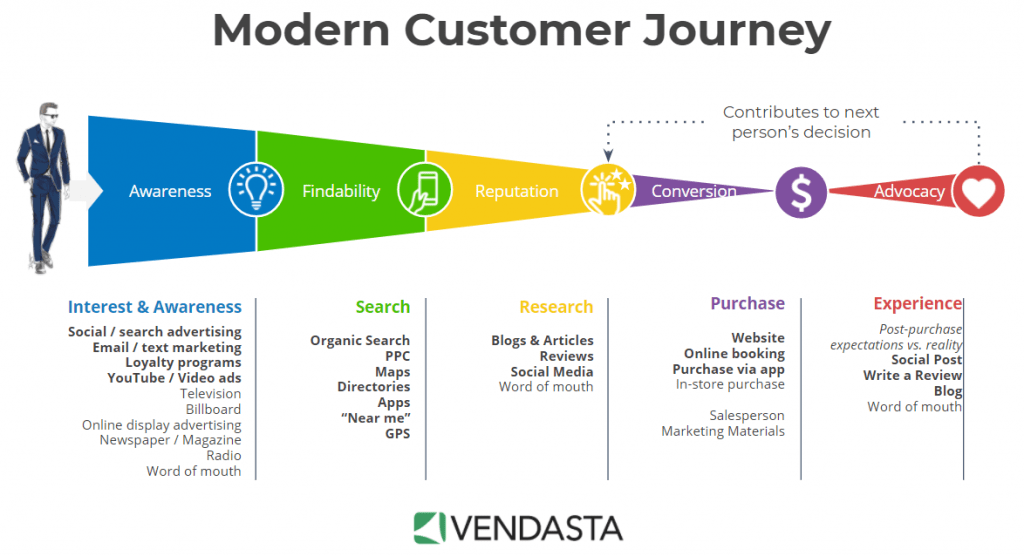
Moreover, understanding the different stages of your customer’s journey helps you craft the best content for each of these phases as you can’t offer the same content format to your audience at all the stages.
For example, at the awareness stage, you can offer infographics to your target prospects. But blogs would be the best for the consideration phase, and eBooks or case studies work wonders for the final or decision-making stage.
Before Kick-Starting Anything Better To Run A Content Audit & Identify Gaps In Your Existing Strategy
Randomly investing your brains and time on discovering relevant content ideas isn’t going to help you at all. So, if you have an already existing content marketing strategy, it’s better to do an audit to identify what’s working and what’s not.
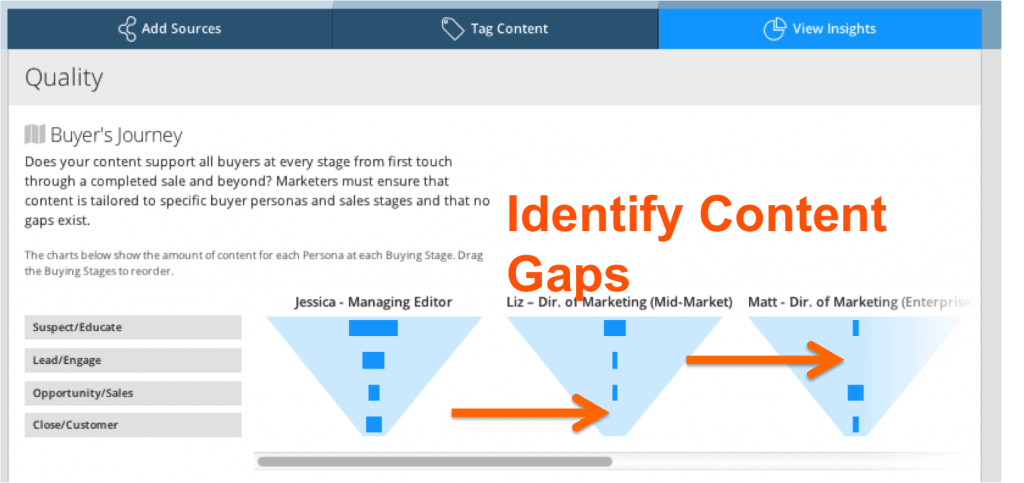
You can use different tools like SEMRush or AHREFs, to do your content audit and identify the gaps in your existing content marketing strategy. Pay attention to the following key metrics to produce more relevant and share-worthy content:
- Specific keywords you are ranking for to get an idea of which of those you should talk about more.
- The number of inbound links to analyze the relevancy of your existing content.
- Total social shares to gauge how popular your content is among your followers on these platforms.
Craft Quality Content With The Help Of The Right Keywords To Fill The Gaps Identified In The Audit
You might think this is an unnecessary point, but in reality, most of us believe that we are creating quality content. However, we end up creating common or irrelevant pieces that don’t strike with our target audience as they can’t find answers to their questions.
Creating quality content looks easy, but you need to do a ton of research and understand that there’s a lot of difference between quality and quantity.

To create content that resonates with your readers and fill the loopholes found in your content audit, you must follow the below-given pointers:
Identify the relevant keywords with commercial intent by leveraging tools like Google AdWords, Google Analytics, and Google Ads Keywords Planner. There might be many keywords in this category, such as Buy Now, Deals, Free Shipping, etc. The tools can help you select the right ones in your niche.
Moreover, getting an idea of three search categories will also let you discover new and relevant keywords:
- Informational searches are done by users to learn something new. For example, “iPad X reviews” or “symptoms of flu.”
- Navigational searches to locate a particular website such as amazon.com, Facebook, etc.
- Transactional searches come when the prospect wants to buy a specific product or service. For instance, “Buy Insurance Policy,” “Subscribe To TOI.”
- Cherry-pick the specific content formats as not every type of content will do justice to your readers. Let’s look at some of the most influential and unique content formats:
- Videos are quite engaging and stay in your audiences’ memory for a longer span.
- Illustrations, infographics, and clipart images, because these are visually pleasing and work wonders in comparison to articles. Ouch is definitely the one you have to check. It offers free graphics for everyone. For example, these phone clipart images can be used in both commercial and non-commercial projects for a link to Ouch.
- Lead magnets such as a checklist, eBook, guide, free tutorial, etc. can help you grab your target audience’s emails by offering them access to your informative content.
- Leveraging user-generated content to boost your reputation among the target audience and it’s handy as you don’t have to create something from scratch.
- Content up-gradation is another handy technique where you don’t have to brainstorm a fresh content idea. You can offer the readers a bonus, a gift card, and free downloadable version of a piece that aligns with one of your previously published blogs.
A Content Or Editorial Calendar To Keep You On Track Always
You are done with your audit and brainstormed the best content ideas, but how will you keep things on track if you don’t have a calendar for streamlined scheduling? Therefore, an editorial calendar is a must.
There are many tools, such as Trello, which you can use to keep your content creation process hassle-free. It’s a handy tool with a flexible pricing scheme which makes it useful and economical both:

A well-organized content calendar helps you churn quality content continuously on various channels and prevent your plan from falling off.
Time To Pick The Right Content Distribution Channels!
If you assume that once you write something, there’s no work left, then it’s an entirely wrong notion as the main task will begin, which is distributing that content piece. You can share your content on various channels, but social media is one of the best platforms because you can find and reach out to your target audience directly.
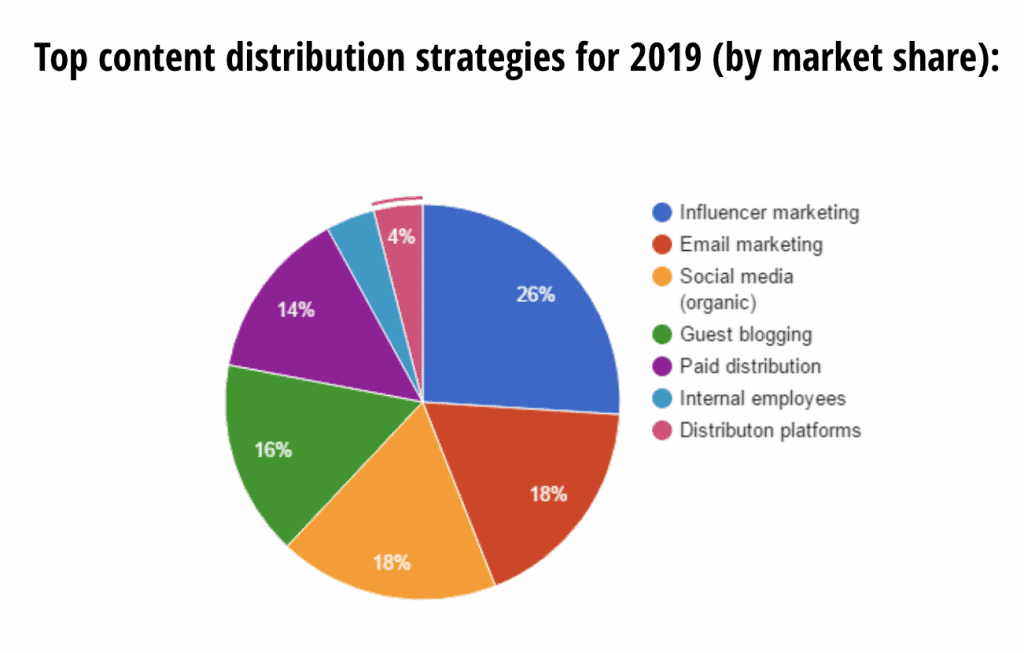
Facebook is considered the best channel to share long-form content, and on Instagram, it’s great to post carousels with crisp captions. Besides, Twitter and LinkedIn are more relevant for sharing formal content. Also, you can use email marketing for disseminating content among your subscribers.
Finally, Analyzing Your Efforts To Track Progress & Identify Gaps Would Be The Last Step
No strategy is permanent, and regular monitoring is essential to identify and optimize on the gaps. The same applies to your content marketing strategy as a robust analysis is crucial for keeping a tab on the key metrics and tracking the progress.

There are many metrics that you can check, but some of the most important ones are:
- Unique page visitors gives you an idea of how many people follow your CTA (Call-to-action button).
- The bounce rate lets you know the relevancy of your content.
- Key traffic sources to understand which platforms bring in the maximum visitors.
- SEO factors like the organic traffic, number of backlinks, and the highest performing keywords to get an idea of how your website performs.
- Engagement metrics on social channels in terms of likes, comments, and shares determine how popular your content is.
Conversion rate, number of leads, and ROI are the three very crucial metrics that tell you whether your prospects think that your products or services are worth buying? Based on the metrics, you can tweak your current content marketing strategy for better outcomes.
Chapter 4:
Do You Know The Secret Sauce To A Win-Win Social Media Strategy?

Like a content marketing strategy, your social media arsenal also needs precise planning. Also, the social channels are quite dynamic, and hence you must follow some critical steps if you want to serve your audience and encourage them to take the desired action:

Specifying Your Objectives & Setting Goals To Fulfill Them
Although one of the purposes of social selling is to provide a human touch to the entire online selling process, everyone has different objectives for developing social media presence. Hence, knowing your specific purpose is very important.
Whether you want to build brand awareness, boost community engagement, or generate leads, each objective requires creating and sharing different content types. You must also attach a goal to each purpose specifying the timeline you expect it to get fulfilled.
For example, if you want to build brand awareness, it’s crucial to share content that can help your audience connect with your brand. Let’s take a look at one of Tiffany’s & Co. Instagram photos, which is an American luxury jewelry brand.

You can see that they have kept the image relevant to their brand’s theme without getting dull and included a sense of culture, fashion, and arts for making it look classy.
Spotting On Which Social Channel, Your Target Audience Is!

Every social media platform is unique and has a different set of audiences with entirely different needs. So, identifying which are the social channels where your target audience hangs out the most is crucial. Also, what kind of content they find share-worthy and which brands they follow are vital questions you must answer to plan an effective social strategy.
Dig Out Your Competitors’ Social Media Strategy To Discover Unique Techniques For Grabbing Leads
Spying on your key competitors is one of the best tactics that help you identify how they are performing and which techniques they’re leveraging to attract and convert leads on social channels.

Doing a SWOT analysis can be the best way to identify your business rivals’ strengths and grab the best opportunities by finding the answers of questions like:
- How do your competitors engage with the target audience on various social media platforms?
- How are the key rivals using social channels to achieve their business goals?
- Which specific hashtags your competitors are trending?
Set-up A Social Media Calendar & Identify Which Topics To Cover On Which Platform

Starting to create and share content strategy on social media without a proper calendar can lead to a mess. It’s better to have a comprehensive social media calendar that outlines the following details:
- Which social media channel you are going to post content on and the date as well as time.
- Which are the specific topics you want to publish and its outline?
- Who is going to create and share the content?
You need to plan your social media calendar for about 2-3 weeks in advance, helping you get into a rhythm and maintain consistency. After a while, you can leverage any social media tool like Hootsuite to schedule weekly content creation and sharing on social channels.
Identify Which Key Metrics To Monitor For Tracking The Progress Of Your Social Strategy

Evaluating specific social media metrics is essential to track the progress and identify the gaps in your existing social strategy. You should keep an eye on ample metrics, but the key ones are as follows:
- “Reach,” which determines the total number of unique visitors who saw your post. Although it’s not that easy to track this metric, it still holds a lot of importance.

- “Clicks,” which gives you an idea of how the audience reacts to your call-to-action button (CTA), whether it’s one of your blogs, logo, or website content. It helps you in understanding how the visitors are moving through your marketing funnel.

- “Engagement” defines how people are involved with your content to get an idea of the most popular content types.

Identify Which Key Metrics To Monitor For Tracking The Progress Of Your Social Strategy
No social media strategy will last forever; hence you must keep revisiting your existing plan and analyze it based on the results you are getting at regular intervals. Based on your judgment, keep identifying the loopholes and optimize them moving forward to achieve better outcomes. Social channels are also quite dynamic, so keeping an eye on changing trends and adjusting your social strategy accordingly is equally essential. Let’s take a look at why social media strategy and content need to align.
Chapter 5:
If Content Marketing & Social Media Strategy Are Different Then Why There’s A Need To Align These Two?

Let’s understand this by assuming that you have an active blog where you post informative and engaging articles daily, but what will its use if the content isn’t reaching your potential customers, right?
So, to let your content reach out to the target audience, it’s crucial to align your social media game plan with the content marketing arsenal.

According to a survey done by eTail and Stackla, more and more brands are turning towards integrating social media marketing to build customer trust and boost sales in 2020.

This extensive rise in social media marketing’s popularity is because businesses leverage social channels to push their content to the target audience in easy-to-consume forms.
Leveraging social channels to share and post relevant content helps you maintain a robust relationship with your audience, nurture existing customers, and bring in new leads!
Also, a holistic content marketing strategy well-aligned with social media marketing can hit the right chord and help in achieving desired outcomes.
Chapter 6:
Do You Have Any Idea Of How To Integrate Your Content Marketing & Social Media Efforts?

To build any robust strategy, you can follow the golden circle theory of the British-born American author and motivational speaker Simon Oliver Sinek.
His idea illustrates the perfect way to build any plan beginning with “why” you’re doing it where you need to specify your goals and concluding with “what” you’ll be doing, which involves the tactics:

However, just knowing the golden circle wouldn’t be of any good to you as we know, it’s easier said than done.
Aligning content marketing strategies with social media looks very easy, but it’s quite tedious in reality.
So, let’s go step by step and look at the things you need to do to align your content marketing with social strategy:
Align The Specific Objectives Of Content Marketing & Social Media
You can have a seamless alignment of content and social strategies unless the goals of both of them are well-aligned.
Before going further, make sure that both of these should serve one or more of the below-mentioned purposes:
- Educate and keep your audience informed on the latest trends and tactics in your sector.
- Entertain your prospects with specific and personalized content.
- Solve the problems of your target audience.
- Convince your leads to become paying customers.
Having similar objectives will help you move ahead in the right direction, and there won’t be any confusion.
Get A Thorough Idea Of Your Brand’s DNA Which Include Your Voice, Tone, & Aesthetics

Irrespective of whether you are sharing a blog on your website or posting social media content, your brand’s voice, tone, and aesthetics should always be consistent, which gives a sense of familiarity to your audience.
Answer the what, why, and for whom before defining your brand’s DNA.
Make sure that your brand’s voice, tone, and aesthetics are consistent across all platforms if you want to align content marketing and social strategy.
By The Way, What’s Brand Voice, Tone, And Aesthetics?
The overall style of your writing and presenting any form of content is your brand’s voice and tone. Majorly, your brand’s voice and tone depending on your target audience.
For instance, if you want to grab female customers, your brand’s voice will be soft and fragile. You must understand your ideal buyer persona, as discussed in the earlier section, before finalizing your brand’s tone and voice.
For example, Harley-Davidson, the popular American motorcycle manufacturer giant, has kept its voice very aggressive, bold, rugged, and tough. It challenges its audience to show that they are worthy of handling their robust bikes!

Coming to brand aesthetics, it’s the cohesive feel comprising your content’s visual look and appearance that you offer your target audience on any platform which establishes a mood and defines your brand’s personality.
Let’s take a look at the aesthetics of SEMRush the imagery, background, and colors used on their website are quite bold and bright.

And, when you scroll their Twitter profile, you will find the similar aesthetics which resonate with that of their website and makes it easily recognizable for the audience:
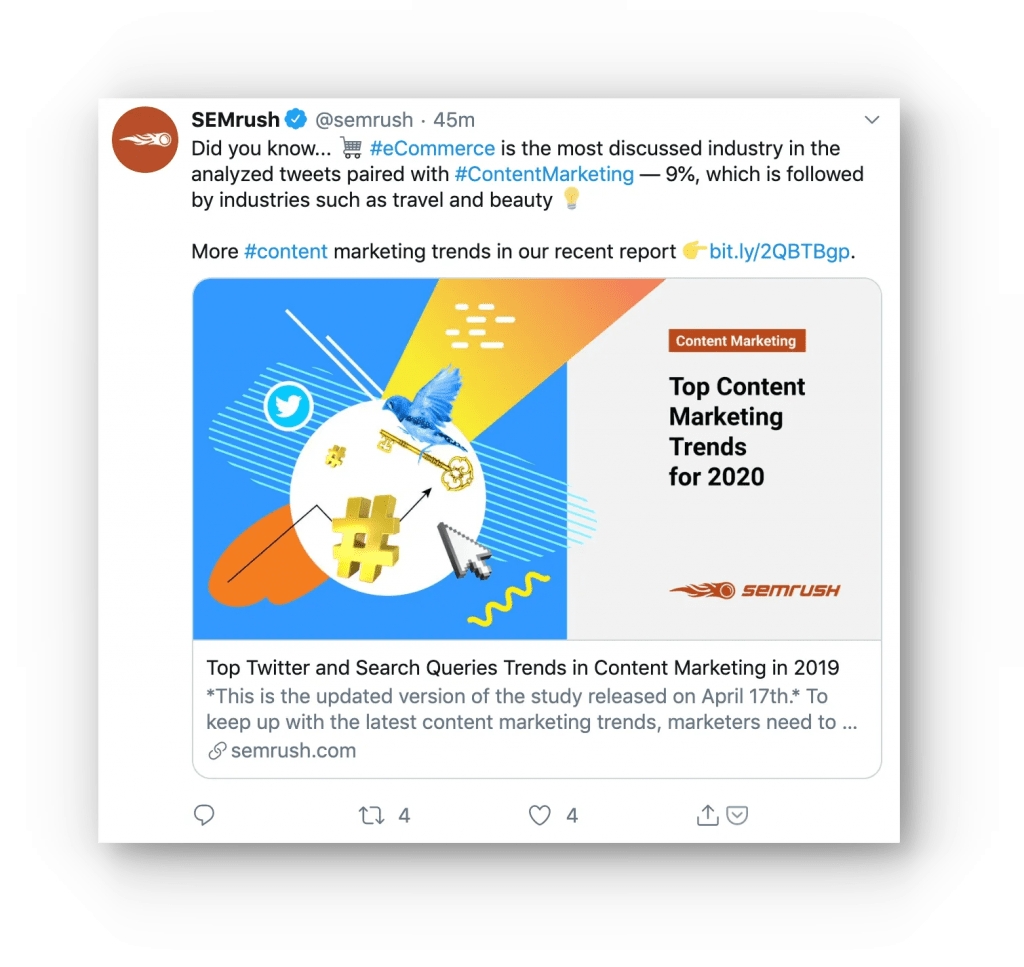
Still, it’s up to you as you can decide how you want to portray your brand in front of your target buyers. You can talk with peers in the same industry to get an idea of how to develop your brand voice and tone.
Remember, once you finalize your brand’s tone, voice, and aesthetics, document the same as a style guide for reference and share it with your entire team so that every content displayed on any platform must look and feel similar.
Never Ignore Repurposing Pieces From Your Existing Content Bandwagon To Save Time & Efforts
Come on, face the fact that you aren’t a content churning machine! Hence, creating 10X content every time is impossible, and having that much time every day isn’t easy. So, what to do?
The best solution to this problem is repurposing your existing content into various formats and offering them to the same audience or a different segment as you wish.
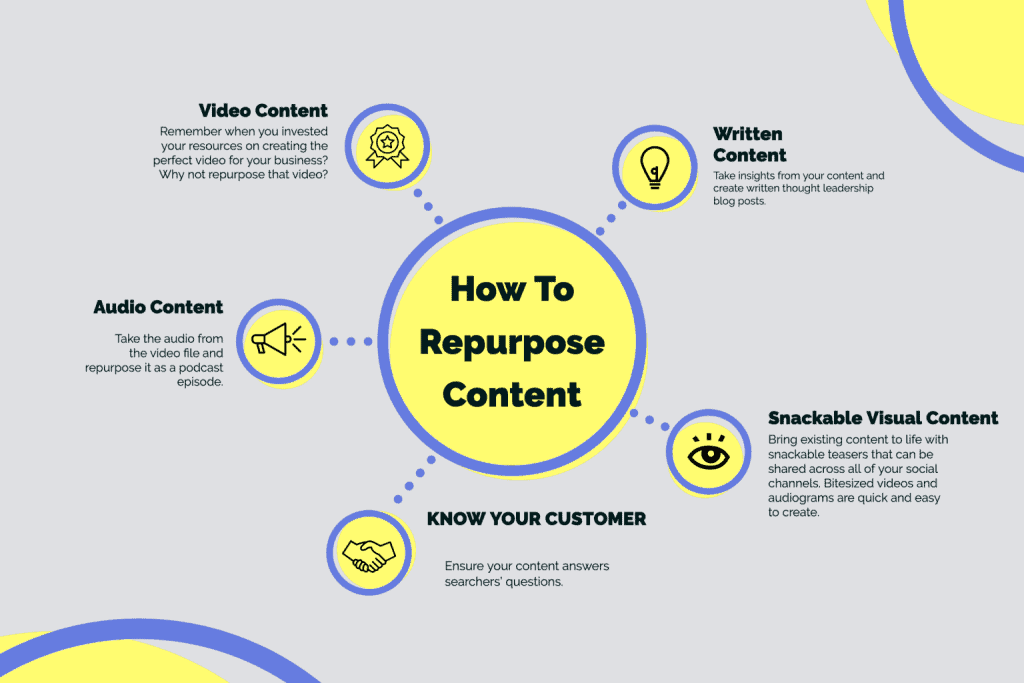
But doesn’t this mean that you can pick any random piece from your previously published samples and repurpose it?
No, you have to be cautious and select the best-performing ones into different types and tailor them according to varied social channels.
For instance, you can try the following content repurposing tricks to begin with:
- Pick one of your best blog posts and repurpose it into various bitesize posts for different social platforms such as a video for YouTube and an infographic for Facebook!
- If you have specific blogs on a particular theme performing quite well, compile those content pieces into an eBook, and offer the same as a lead magnet to your audience.
- If memes are relevant to your niche you can create one for social channels that link back to your existing blog posts.
- Take your “how-tos” or “tips for” articles and turn them into cheat sheets or checklists for optimizing audience engagement.
- Use a powerful statistic or influencer quote from one of your existing articles and create an engaging graphic you can share on social channels.
- Turn your videos into podcasts which the audience can tune into anytime.
- Convert your LinkedIn posts into carousels and share them on Instagram for better visual appeal. Also, you can pick some of these carousels and turn them into YouTube videos.
- Conduct webinars on some of your best live blog posts to educate and keep your audience informed. With the help of webinar software, you’ll be able to streamline your business and communicate with potential customers in ways never before thought possible.
Cross-Promotion Is The Best Way To Align Your Content Marketing & Social Strategies
For aligning your content marketing and social media strategy, it’s crucial to maintain coherence between both.
For that, you must make it easy for your audience to find links to your content, no matter which platform they are!
But linking one channel to another is no less than an art.

For establishing a seamless connection, you need to include social navigation on your website and promote links to your site’s content on social channels.
Some of the best examples of cross-promoting your content are:
- If you have a blog post talking about earning more freelancing gigs, you can embed a link to a YouTube video on a similar theme. In that YouTube video, you can place a link to your blog as a further reference to the audience.
- Share carousels on your social media pages about an eBook on your site.
However, remember that while cross-promoting your content following the 80/20 rule is a must, which states that 80% of your content should educate the audience, and 20% can be promotional!
It’s one of the most effective strategies that turn more of your followers into paying customers as it helps you to refrain from sounding promotional all the time and build a real connection with your audience.
Retargeting Your Content Can Help You In Grabbing The Potential Leads Before It’s Too Late
Not all your audience needs to enjoy your content, but there might be some of them who are looking for more information.
How to find and grab those?
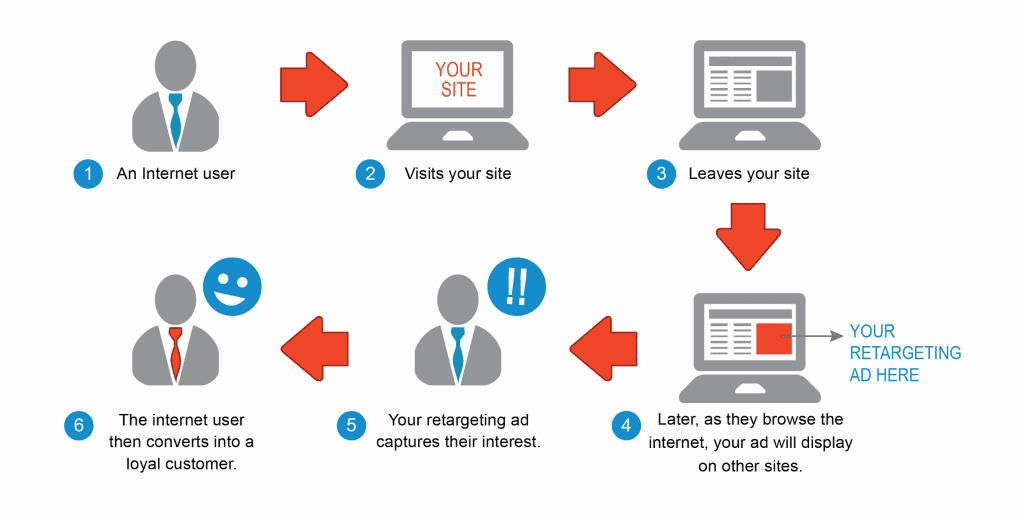
Here retargeting comes into play as it presents ads to the customers who have previously visited your website on different social media channels such as Facebook, Google, and LinkedIn.
Retargeting presents your content to the audience looking for similar solutions or have been your customer in the past.
For example, retargeting you can grab the attention of visitors who have visited your eCommerce portal but:
- Customers who didn’t purchase anything from your website.
- Place items in their cart but didn’t checkout.
- Existing customers.
- Blog subscribers.
How To Do Retargeting?
Facebook is the most accessible platform for retargeting as when you share one of your blog posts on this channel, and you can keep an eye on who has consumed it, and based on that, you can retarget content to the relevant audience.
Let’s look at the retargeting done by Jasper’s Market, which is quite hyper-focused along with crisp message specifically about one of their products to target a particular segment of audience interested in that niche:

Retargeting helps you display relevant ads to site visitors and deliver content directly to their feeds to highlight the value of your products or services.
Leverage Tools To Optimize Content Creation & Distribution
Creating, optimizing, and distributing content on an exponential scale can be quite tiresome, but you can use various tools to keep the efficiency of the entire process intact.

There are many tools available in the market, but some of the best ones are:
- For keeping the content marketing and social strategy aligned, seamless team communication is crucial for which you can use tools like Chanty that help you refrain from skipping any essential details or discussion pointers.
- There is also the popular employee management software Monday.com which lets you easily customize your team workflow and communication.
- Canva is the best designing tool to help you create engaging graphics, carousels, and infographics to easily and quickly share on social channels.
- Content scheduling is a daunting and time-consuming task for which you can use tools like HootSuite to keep your editorial calendar on track.
Keep Tracking, Understanding, & Measuring The Key Metrics To Monitor The Progress & Identify Gaps
Measuring metrics is essential as it allows you to optimize your efforts for better future outcomes.
Failing to measure critical KPIs is one of the biggest social media marketing mistakes that can harm your overall progress.
You need to track the data from your website and social media channels to understand your current situation and drive 10k+ customers. Let’s look at the critical metrics in brief:
- Website Metrics such as bounce rate, unique page views, traffic source, newsletter subscriptions, pages per session, click-throughs, etc. gives you an idea of what’s happening and lets you maximize your conversion rates by filling the gaps.

- Engagement metrics include the total number of clicks, shares, and comments on your content on social channels to understand how share-worthy your content is and the areas you can improve.
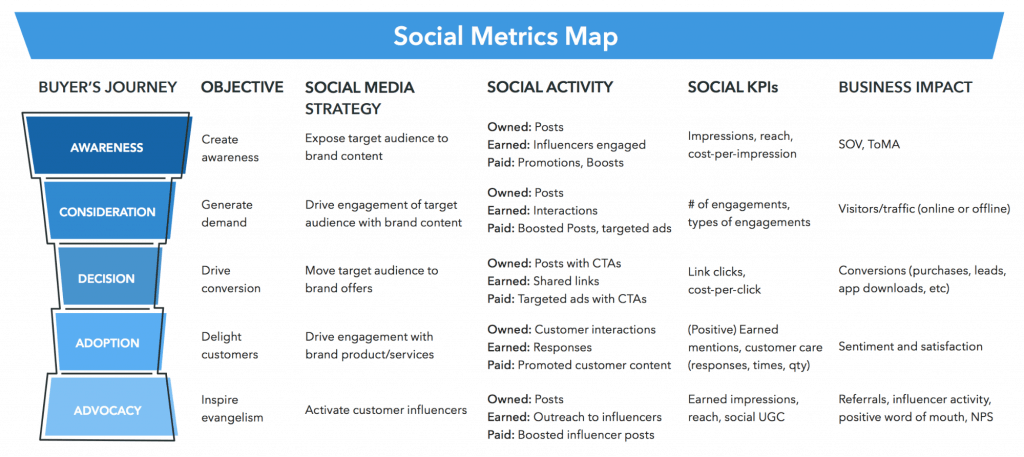
- Overall metrics comprise the number of leads, conversion rates, and ROI that you have achieved because of your content marketing and social strategy’s alignment.

Measuring KPIs is an essential part of the entire strategy as it helps you understand what your audience likes to read.
For example, the same content might be more prevalent on Instagram in the form of a carousel, but on Twitter, that wouldn’t work wonders as plain text.
Keeping an eye on metrics allows you to analyze the loopholes and provide the audience with what they want and encourage them to take the desired action.
Time To Revise & Renew The Current Strategy For Improving Your Performance
Considering the dynamic social media landscape and the business economy’s uncertainties sticking to the same strategy forever isn’t right.
So, based on your analysis, keep experimenting with your current plan and revise it every few months for keeping up with the changing market trends.

You can find ample ways to introduce innovations and fresh tactics in your content marketing and social strategy collision, but some of the best ones are as follows:
- Always keep identifying new and exciting formats to create and share content such as webinars, meetings, conferences, etc.
- Interact with different people in your niche and collaborate with your audience to consider varied perspectives that can pave the way for unique strategies.
Ready to Align Your Social Media and Content Marketing Strategy?
Aligning your content marketing and social strategy might take some time and a lot of effort, but if you maintain consistency and be patient, no one can stop you from reaping rich rewards.
So, what’s stopping you from trying?
Start doing your bit of research, create value-adding content for your audience, and promote it on the right channels to achieve your goals.
Here’s to your alignment and goals!

